In the dynamic world of destination marketing, securing a one-time visit is just the beginning. The true challenge lies in transforming visitors into loyal patrons who return time and again, creating a cycle of sustained success. Whether you’re a Destination Marketing Organization (DMO), a city planner, or a representative of a municipality, understanding the factors that drive repeat visits (and what keeps people away) is essential.
If increasing repeat visits is on your radar in the coming year, here are actionable strategies to boost customer retention and turn first-time visitors into devoted fans. We’ve delivered success for many of Red Sage’s integrated communications clients deploying the following.
Unveiling the Challenges: Why Repeat Visits are Hard to Get
In the Red Sage team’s experience, sometimes understanding why something “isn’t happening” is the fastest way to understanding how we can “make it happen.” What prevents a mom or dad from signing their kids up for a summer camp at the local zoo, when they just enrolled the previous spring? Or keeps a 25ish young professional from recommending Savannah, Georgia as the getaway spot for an upcoming girls weekend?
Lack of Personalization
One-size-fits-all experiences can leave visitors feeling detached. When attractions and destinations fail to tailor their offerings to individual audiences’ preferences, visitors may perceive the experience as generic and not worth repeating. This is one of the most common challenges our mid-sized DMO, city, and community clients face. Finding ways to integrate a “personal touch” into visits is key – and that starts with knowing your audiences. We strongly encourage building of personas to help marketers visualize what ELSE your audiences are interested in besides the obvious. From there you can build out experiential strategies that cater to them.
One idea our team loves? Hotel “gift baskets” provided by the local Chamber or DMO for out-of-area visitors, with curated treats and incentives to share positive stories about their visit through social media. Another low-hanging fruit tactic? Re-marketing through e-newsletter or direct mail. Done smartly, you can re-engage a past visitor by showing them an experience similar to one they’ve had in your city, or at your venue. What should you promote, you ask? That’s where personas will help.
Limited Engagement Opportunities
Destinations that don’t foster ongoing engagement risk becoming one-time stops. If visitors don’t see reasons to return, whether through events, new attractions, or interactive campaigns, they’re less likely to make a repeat visit. Annual concerts and conferences have an advantage, in that their line-ups of performers and speakers will change routinely. BUT, if you’re a regional-interest museum, it might not take long for even the most passionate history buff to tap out after one or two visits. Bottom line, stay FRESH and invest in marketing fresh elements and activities – so people actually know there’s more to see than what they encountered before.
Negative Experiences and Feedback
Negative encounters, whether with staff, facilities, or services, can leave a lasting impression. Without proper addressing and rectification, negative experiences can dissuade visitors from returning and may even influence others not to visit. Watch out for this! We’ve seen a big uptick in communities and organizations struggling to combat negative experiences that were brought on largely due to Covid-19, as well as ongoing recruitment and staff training challenges. The best remediation strategies are rooted in classic customer service teachings – when something goes wrong on-site, do anything possible to remedy the situation quickly and efficiently (with a little extra something, be it a small gift or refund) to smooth things over.
Ineffective Communication
Lack of effective communication can contribute to a sense of disconnect. If visitors aren’t kept informed about upcoming events, improvements, or changes, they may not feel a sense of belonging or investment in the destination’s evolution. Many organizations in the entertainment, recreation, travel and tourism space struggle with how best to allocate their advertising and marketing budgets. How much should go to “maintenance” outreach with engaged audiences vs. say, campaigns to bring in new people? As a general rule of thumb, we recommend 60% to 40% – with 60% of your budget going to re-engage those who are previously engaged. New people ALWAYS cost more money and while it’s critical to invest in reaching them if you want to grow, leveraging existing good-will through consistent communication is one of the highest-ROI tactics we’ve seen.
Competition From Similar Destinations
In a saturated market, destinations must distinguish themselves. If similar places offer more compelling reasons to visit or better experiences, visitors may opt for alternatives, reducing the likelihood of repeat visits. And make no mistake, the competition is fierce. Several years of high inflation, economic and market pressures, general wanderlust, and the desire to “branch out” are all considerations for today’s recreationists.
The explosion of digital and social marketing tactics, alongside all the traditional outreach options of yore, has resulted in more ways than EVER to reach consumers. In 2023, media owners’ global advertising revenue was projected to reach a staggering $874.47B estimated. estimated. The figure was projected to surpass $1.1T dollars by 2028. Basically, there are a LOT of people, pouring a LOT of money into advertising every day. A huge piece of that pie represents the destination, travel, and tourism industry.
Strategies for Boosting Customer Retention and Repeat Visits
So how can you combat the issues above? We’ve shared a few ideas already, but want to elaborate here with a simple, multi-faceted “strategic action plan” you can put to work right away – no matter where you sit within your organization’s communications and marketing structure.
Create Personalized Experiences
Strategy: Implement data-driven personalization to tailor experiences.
Action Steps:
- Utilize customer data to understand preferences and create personas.
- Offer personalized recommendations and itineraries through proven communications channels like e-newsletter, website, or direct mail.
- Leverage technology for personalized communications, with thank-yous and other follow-ups including purposeful suggestions.
Outcome: Visitors feel a stronger connection, increasing the likelihood of return visits.
Continuous Engagement Initiatives
Strategy: Foster ongoing engagement to keep the destination top of mind.
Action Steps:
- Host regular events and festivals.
- Introduce seasonal promotions and exclusive offerings.
- Utilize social media for real-time engagement, leaning into user-generated content whenever possible for authenticity.
Outcome: Visitors have reasons to return, ensuring continued interest and excitement.
Proactive Issue Resolution
Strategy: Address negative experiences promptly and effectively.
Action Steps:
- Establish a feedback loop for visitors. Where can they go to address a situation (before it winds up on social media?)
- Train staff in effective customer service.
- Implement recovery strategies for dissatisfied visitors.
Outcome: Turn negative experiences into opportunities for redemption and loyalty.
Enhanced Communication Channels
Strategy: Establish robust communication channels for transparency, prioritizing re-engagement of known audiences.
Action Steps:
- Utilize newsletters to update visitors on developments.
- Leverage social media for regular updates.
- Maintain an informative and user-friendly website.
Outcome: Visitors feel connected and informed, fostering a sense of loyalty.
Strategic Partnerships and Collaborations
Strategy: Collaborate with other attractions and businesses to enhance offerings.
Action Steps:
- Forge partnerships with local businesses.
- Collaborate on joint marketing campaigns.
- Offer combined packages and promotions.
Outcome: Distinguish the destination by providing unique, comprehensive experiences.
Loyalty Programs and Incentives
Strategy: Reward and incentivize repeat visits.
Action Steps:
- Implement a loyalty program with exclusive perks.
- Offer discounts or special access for returning visitors.
- Provide incentives for referrals and positive reviews.
Outcome: Encourage repeat visits by adding tangible value to loyal patrons.
Harness the Power of User-Generated Content (UGC)
Strategy: Showcase authentic experiences through UGC.
Action Steps:
- Encourage visitors to share their experiences on social media.
- Feature UGC on official marketing channels.
- Host UGC contests and campaigns.
Outcome: Build a community of advocates, inspiring others to experience the destination.
Invest in Destination Storytelling
Strategy: Craft compelling narratives that resonate with visitors.
Action Steps:
- Develop a cohesive brand story for the destination.
- Utilize various mediums, including video and blogs, to tell stories.
- Showcase the destination’s unique identity and charm.
Outcome: Emotional connections drive repeat visits as visitors connect with the destination’s narrative.
Embrace Sustainable Practices
Strategy: Appeal to eco-conscious visitors with sustainable initiatives.
Action Steps:
- Implement environmentally friendly practices.
- Highlight sustainable efforts in marketing materials.
- Engage in community environmental initiatives.
Outcome: Attract and retain visitors who value destinations committed to sustainability.
Community Involvement and Engagement
Strategy: Make visitors feel part of the destination’s community.
Action Steps:
- Facilitate volunteer opportunities for visitors.
- Host community events and gatherings.
- Encourage participation in local initiatives.
Outcome: Create a sense of belonging, encouraging visitors to return and engage in the community.
Measuring Success: Key Performance Indicators (KPIs) for Repeat Visits and Customer Retention
If you’ve already implemented many of the strategies above with your organization, great! If you’ve seen a lot here you’d like to deploy, even better! Either way, remember that measurement is the key to proving value for stakeholders – whether it’s a board, or funding collective, or private donor who cuts the checks, you’ll want to be able to justify investments in visitor retention and growth strategies.
Here are some metrics Red Sage recommends for our agency’s clients, when defining what to measure:
- Repeat Visit Rate: Percentage of visitors who return within a specified timeframe
- Net Promoter Score (NPS): Measure of customer satisfaction and likelihood to recommend
- Customer Lifetime Value (CLV): Estimation of the total value a customer contributes over their lifetime
- Referral Rate: Percentage of visitors who refer others to the destination
- Social Media Engagement: Metrics such as likes, shares, and comments indicating audience engagement
- Participation in Loyalty Programs: Number of visitors enrolled in loyalty programs
- Online Reviews and Ratings: Monitoring positive and negative reviews on platforms like TripAdvisor, Yelp, and Google
- Event Attendance: Number of visitors attending events and festivals hosted by the destination
- Average Stay Duration: Average length of time visitors spend at the destination
- Community Engagement Metrics: Participation rates in community events and initiatives
Repeat Visits Start with Strategies that Eliminate Barriers
Transforming a one-time visit into a cycle of repeat patronage is a nuanced endeavor, requiring a blend of personalized experiences, proactive engagement, and strategic marketing initiatives. By addressing the challenges that hinder repeat visits and implementing the outlined strategies, destination marketers can foster a sense of loyalty, turning visitors into advocates and ambassadors for the unique experiences their destination offers. THIS is the ultimate endgame – to go beyond bringing people to a place, fostering real loyalty to the brand.








